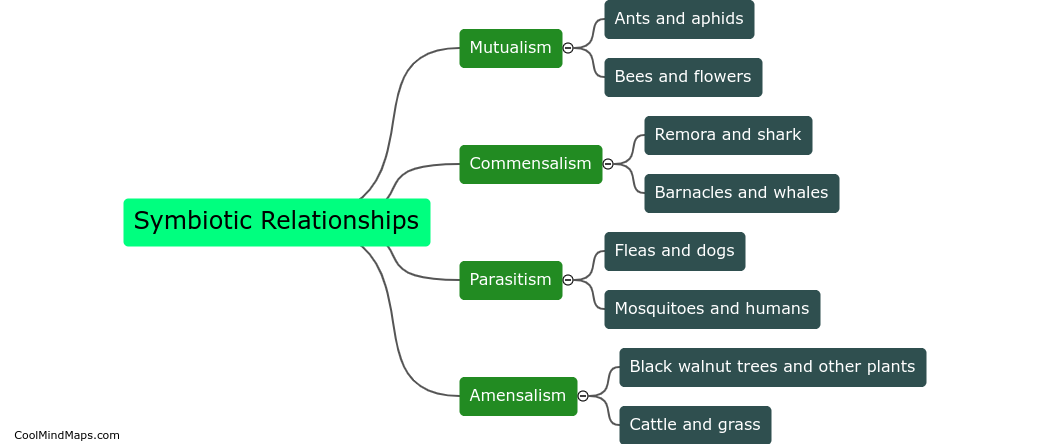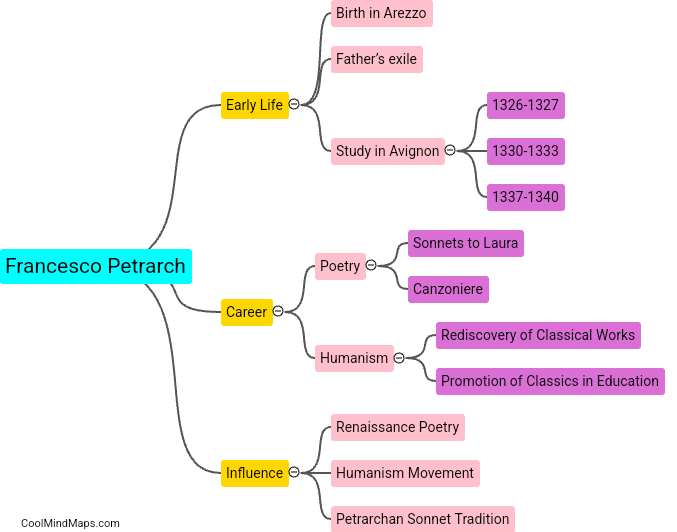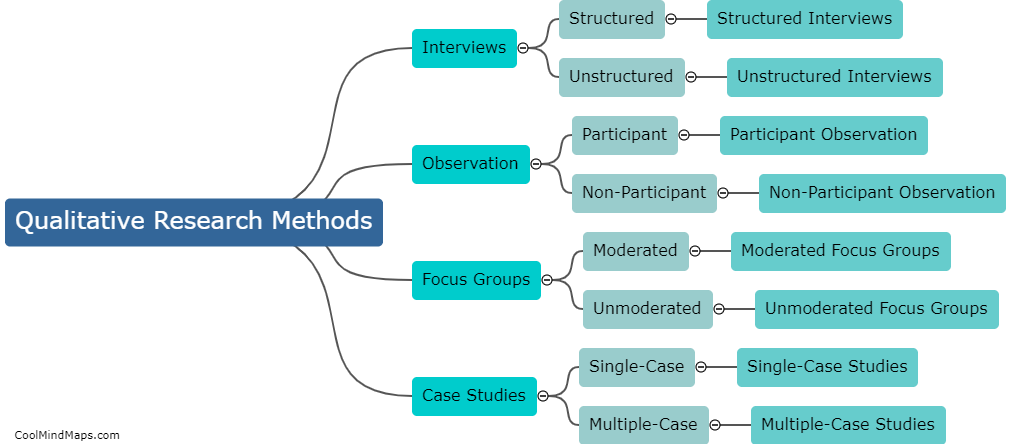What are the different types of symbiotic relationships?
Symbiotic relationships are interactions between two different species that live together in close proximity. There are several different types of symbiotic relationships, including mutualism, where both species benefit from the relationship; commensalism, where one species benefits while the other is neither harmed nor benefits; and parasitism, where one species benefits at the expense of the other. In mutualism, both species rely on each other for things like food, protection, or reproduction. Commensalism occurs when one species benefits, often by obtaining shelter or transportation, while the other species is simply unaffected. In parasitism, one species (the parasite) gains nutrients or resources from the other (the host) while causing harm or damage. These various types of symbiotic relationships reflect the variety of ways that different species coexist and rely on each other in nature.

This mind map was published on 8 January 2024 and has been viewed 82 times.











